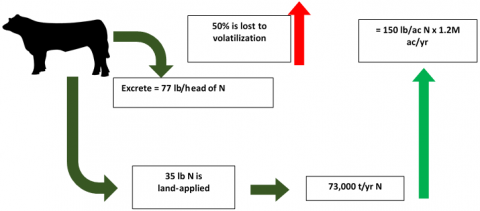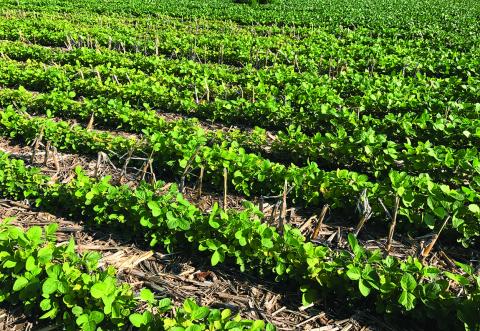Crop Residue and High-Carbon Char: Potential Soil Conservation Tools
May 8, 2018
Soil is the single most important resource on which our agriculture depends. Proper soil management is necessary to sustain long-term agricultural productivity. Soil loss through erosion or run-off hurts agricultural production with depletion of organic matter and fertility. It also has environmental implications.
Fertilizer N Substitution Values of Land-Applied Organic Materials
January 8, 2018
An article from the Proceedings of the 2018 Nebraska Extension Crop Production Clinics on accounting for nitrogen from land-applied manure when determining soil nutrient needs for crop production.
Nitrogen Fertilizer Stabilizers in Corn
April 19, 2018
Understanding how the three types of nitrogen stabilizers work can be helpful in deciding whether to add one to your spring application. Short- and long-term studies in Nebraska offer insight into how they performed across multiple years. Now, if you only knew how many inches of rain you'd get the first six weeks after application.
Improving the Efficiency of Applied Organic N
April 11, 2018
University of Nebraska research is offering new insights into plant use efficiency of organic N resources such as livestock manure, municipal bio-solids, and others. The studies continue through 2018 and are expected to influence changes in university recommendations.
What's New with Micronutrients?
April 10, 2018
Micronutrients are in the spotlight these days with new biological products coming to market. This update looks at micronutrient research updates, including which nutrients are likely to enhance profit and how results can differ among different soil tests.
Nutrient Management for Organic Production
April 5, 2018
The NebGuide, Nutrient Management in Organic Farming, features information also of value to conventional production, including manure management, composting, non-traditional products, and crop rotation suggestions.
What's New with S Fertilizer Use?
April 5, 2018
When is applying sulfur likely to be profitable and when is it cutting into your potential profit? This brief shares information from more than 100 university trials verifying current university recommendations.
What’s New with K Fertilizer Use?
April 5, 2018
Three studies with a total of 50 trials applying K at various rates to corn verified that the likelihood of a profitable response is very low if the soil test level is above 125 ppm.






